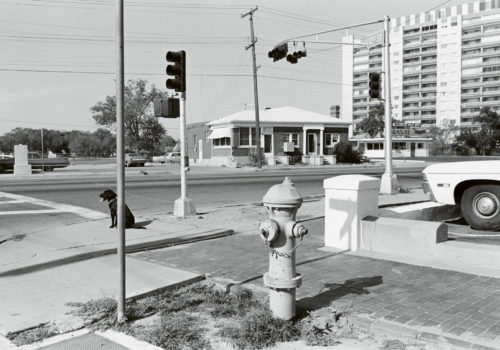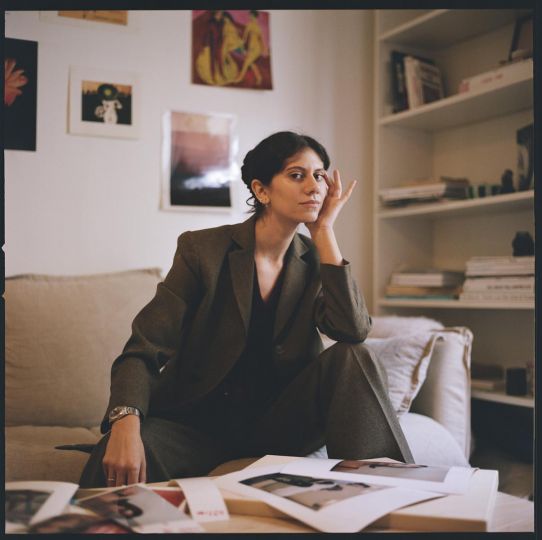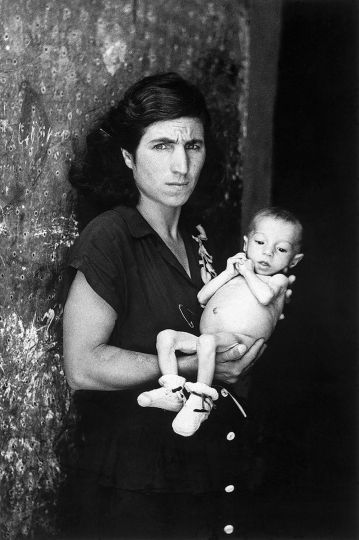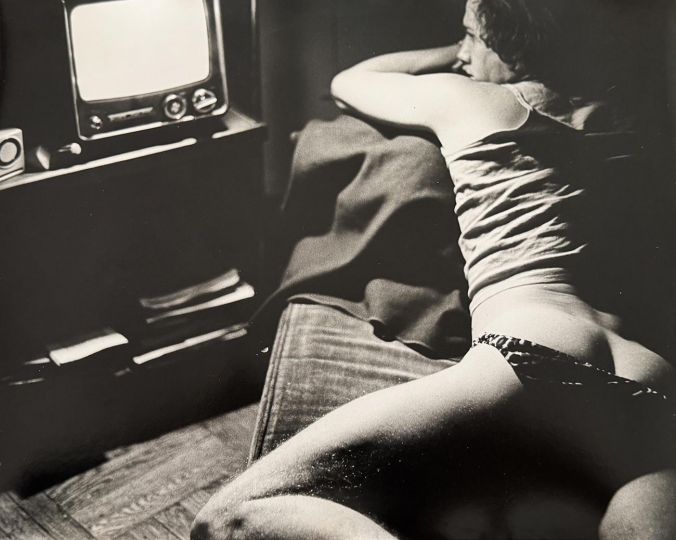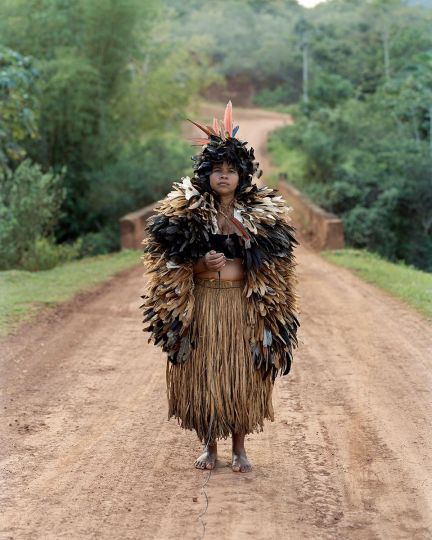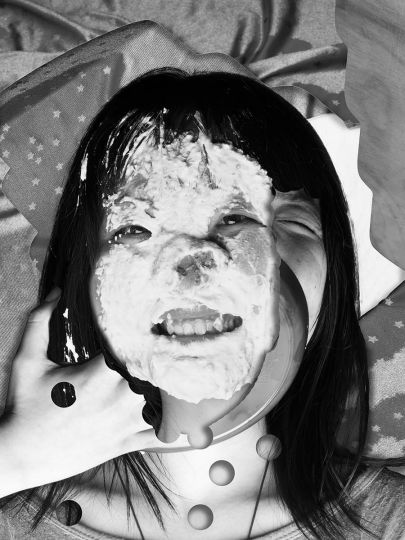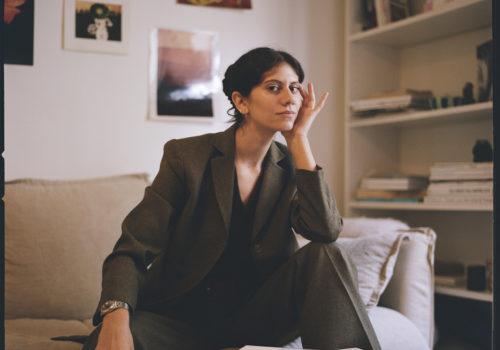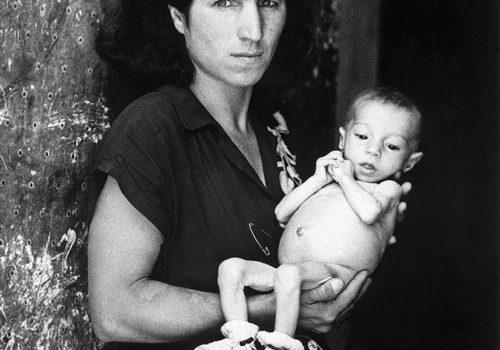This is one of my favorite Lee Friedlander photos. And, I’m sure, that of a lot more people; it’s simple, yet complex at the same time. There’s nothing special about this photograph and, nonetheless, it’s so complete, a miracle of design. This proliferation of elements crystallizes in a complicated puzzle that fits together perfectly. If we remove the dog, the traffic lights or the fire hydrant…, we would only upset the photo’s balance.
Friedlander does not need to resort to what is known as the “decisive moment”, as Cartier Bresson would do, or the fleeting nature inherent in a snapshot, which produced such wonderful results for Helen Levitt or his friend Garry Winogrand. If they give us the impression that everything happens in a flash or that, in the blink of an eye, what we are seeing will immediately turn into something else and not be repeated in its present form, when Friedlander takes the photograph.
Albuquerque, New Mexico in 1972, we imagine that a second later everything will be just the same, but that everything would change if any of the picture’s elements were to disappear. The magic is not in the “decisive moment”, but rather in the “precise framing”, the way the world that stretches before the camera turns into a photograph. And the novelty lies, not just in the way of describing the world, but also in the subjects chosen to do so. They are no longer subject to the tradition of the concepts of what is beautiful and harmonious, but rather offer formal sense to the disorder of the landscape, sometimes desolate, full of aggressive elements such as power lines, traffic signs or billboards.
The image is created in a confluence of small, almost instantaneous decisions whereby the photographer delimits the end result. The framing enhances those elements chosen by him from among the many potential framing options and banishes others to the margins; they thus come to life, creating a new relationship between them, with each element making as much sense as any other, without hierarchies. Everything looks familiar – it is an ordinary environment – yet the photograph is not; that apparent arbitrariness is organized within the frame, like a magical recording of a common place. Rather than emphasizing each element, we can also view the image as an abstract composition, in which it is pointless to seek a meaning and we should just enjoy it. The result is a Friedlander, a world where real elements coexist in the same space with reflections and shadows, and where there is evidently a tremendous ability to find that diffuse factor which, in an unexpectedly sudden fashion, will prove essential when it comes to comprehending the world.
Carlos Gollonet. Curator
Lee Friedlander
From 01/10/2020 to 10/01/2021
Fundación MAPFRE
Recoletos Exhibition Hall. Madrid
https://www.fundacionmapfre.org/fundacion

